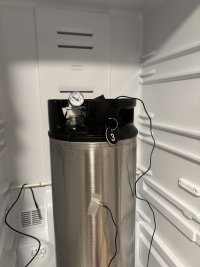I'd be curious to know what exactly is in a spent mash at the end. Is it just husks? Or do particles still exist, that are storing sugars in their bodies?
There are still remnants of the endosperm grits in addition to husks. I have done some web searching to see if I could find some micrographs of spent grits, but have been unsuccessful. To get good pics of the structure of spent grits the microscopist would need to employ critical point drying of the grits so that the structure does not collapse when dried. (Side note: I used to do critical point drying of biological specimens prior to scanning electron microscopy.)
I would imagine that a continuous vorlouf would help. Over the hour long vorlauf, more sugars might be washed out of the particle body, and into the liquid wort.
Not really. You don't get significant flow thru the interior of the particles, so this would be a minor effect, if it exists at all. A good stir prior to a short vorlauf will give the same results. Once things are homogenized, more vorlaufing/recirculating will not do anything w.r.t. wort concentration.
Perhaps the reason biab gets numbers even close to 3v is that they do a full water mash, very thin indeed. sugars are encouraged to come out into the thin solution. And then instead of going for a settled mash bed, these brewers stir the mash, again, and again encouraging sugars to come out into solution.
No, it's not the thinner mash, it is the lower grain absorption rate you can get with a long drain, especially if you use a hanging bag which provides some squeezing of the grain mass. With a typical MLT the absorption rate will be about 0.12 gal/lb, but a well drained bag can get you down around 0.08 gal/lb, even without manual squeezing.
But
a thinner mash will convert faster, so a thicker mash will take longer to reach 100% conversion. If the mash time is too short to reach 100% conversion with a thick mash, but would be with a thin mash, then you can get a conversion efficiency, and mash efficiency advantage, with a thinner mash.
Also, small grits (finer crush) reach complete gelatinization faster than larger grits, so can reach complete conversion faster. BIAB systems tolerate fine crushes better than 3V systems, so again may have a conversion efficiency advantage over 3V systems, if mash times are too short for complete conversion of the larger grits.
In a mash, all sugar is in solution the instant it is created. The local concentration of sugar in the wort can be higher inside the grit pores, until time + diffusion or stirring homogenizes concentration throughout all of the wort
Brew on

.















































![Craft A Brew - Safale S-04 Dry Yeast - Fermentis - English Ale Dry Yeast - For English and American Ales and Hard Apple Ciders - Ingredients for Home Brewing - Beer Making Supplies - [1 Pack]](https://m.media-amazon.com/images/I/41fVGNh6JfL._SL500_.jpg)











